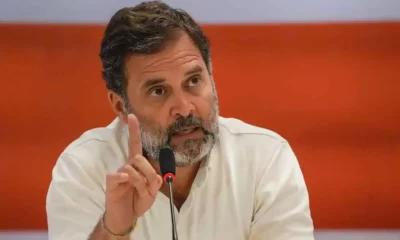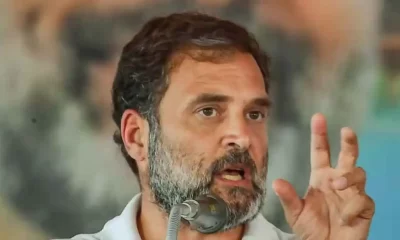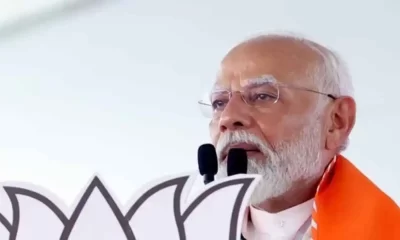India News
Reflecting On Rahul Gandhi And Cow Belt – With Eyes Closed
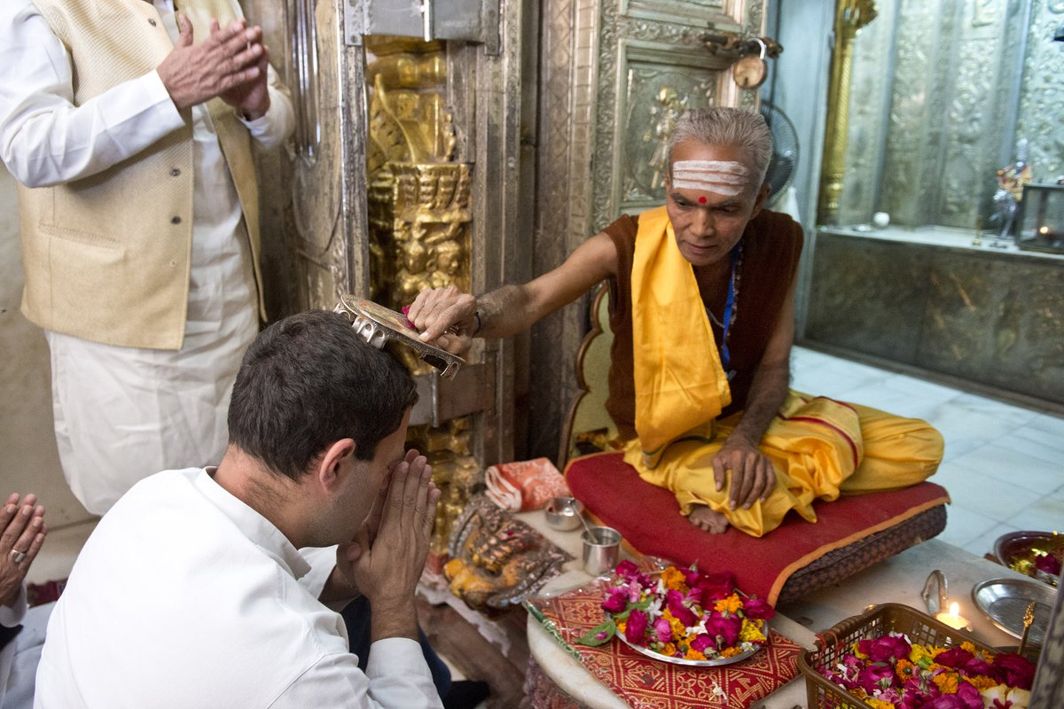
By Saeed Naqvi
I missed out on the “tumult” these past weeks in circumstances which remind me of Shah Sarmad, the great Sufi saint of Jewish extraction, who wrote:
“I slept through the tumult on Judgement Day.
When I half opened my eyes to see if it was over,
I saw that it was still continuing.
I closed my eyes again and slept.”
Strange, the connections the mind makes. Sarmad’s experience came across to me as a variation on the most serene aasana in yoga called Yoga Nidra. In this aasana, as the body slips into the deepest sleep, consciousness is proportionately sharpened, to a point where the mind can traverse the details of the body, the immediate environment and the universe outside.
The blissful combination of Sarmad and Yoga Nidra fell into my lot, paradoxically, in the care of Dr. Cyrus Shroff, who brilliantly stitched together an injured retina in a two and a half hour surgery and confined me to bed upside down, quite literally, adding a new dimension to my yogic experience.
The new Congress President, Rahul Gandhi in his new Hindu avatar, swam into my ken, wearing an unconvincing janaeu over his jacket and temple hopping with frenetic frequency.
Image projection is much more cosmopolitan in his travels overseas. After his visits to US campuses late last year (Berkeley and Princeton, for instance) escorted by Sam Pitroda and, in segments, by Shashi Tharoor and Sunil Khilnani of the Idea of India fame, Rahul Gandhi turned up for a high powered international meet in Bahrain earlier this month. Similar jamborees are lined up in Singapore in March and, later, in Malaysia, then the UK and so on. Foreign travel has been imaginatively woven into the promotion plans possibly to forestall chances of his taking off on his own to unknown destinations, given his compulsive yen for foreign travel.
No one can grudge him his international itinerary. What has to be watched with some concern, however, is his new Hindu projection. It can be argued that it worked to some extent during the recent Gujarat elections where he diligently steered clear of Muslim groups, localities and even Congress leaders who happened to be Muslim. Indeed even a person of Ahmed Patel’s seniority was advised not to be seen in Rahul Gandhi’s vicinity. Electoral results were not altogether bad. Who knows, the trick of treating Muslims as pariahs might work to some extent in the Hindi belt. Beyond this belt, however, a new makeup will have to be applied to his visage. Will that not raise issues of credibility?
Influential segments of the chatterati are already beginning to place their bets on the new soft saffron. For this lot “secularism” is a political burden because it opens the Congress to the charge of being “Muslim friendly”. This image must be discarded at all costs because it gives Hindutva a handle for communal polarization. The unstated theory is: if the Congress embraces soft Hindutva, the BJP will be left with nothing to oppose?
A pity the residual Congress leadership does not see the dangers of competitive communalism. If this is the way the game is to be played, the polity will continue to shift dangerously towards the far right – in the cow belt most certainly.
In this belt, we Urduwallas had placed all our bets on the durability of the Ganga-Jamuni or composite culture which we had forged over centuries of cultural commerce and an overriding love for this land and its soft pastoral tones. I never tire dwelling on Urdu poets having written adoringly on Rama, Krishna, Gokul, Varanasi, Triveni, Koel on a mango perch. Indeed even the Prophet’s birthday was celebrated by Mohsin Kakorvi by describing the clouds floating ecstatically from Kashi to Mathura to catch a glimpse of Krishna.
All of this would have had a chance of surviving had Partition not taken place. I dwell in some detail on this theme in my book “Being The Other: The Muslim in India”.
If Partition could not be avoided, the next best option for all would have been an honest to goodness Hindu Raj: the obvious name for the country would then be “Hindustan” as opposed to “Pakistan”. After the Congress’s unseemly rush to accept Pakistan, (thereby defacto accepting the two nation theory) this should have been the logical next step.
Quite seamlessly we glided from British Raj to Hindu Raj. The problem Congress generated was precisely this: having helped create a Hindu Raj, it proceeded to deny its existence, inciting politics which provoked Hindutva to complete the unfinished business.
Accepting the label, Hindu Raj, it is suggested was against Nehru’s self image. Such a label would also have smacked of the “mofussil” to the thin layer of Macaulay’s elite, clustered around him. Above all, there was that minor matter of Kashmir which could only have been kept in a “secular” state.
An honest bargain could have been struck in a “Hindustan”. I am almost embarrassed to cite Britain as an example. The country is anchored to the Anglican Church, and yet has a Muslim Mayor of London. All religious denominations are in the cabinet (and shadow cabinet). Indeed, at one stage there were four Muslims in the English cricket team. It is a tolerant society where the rule of law applies. Just imagine what a bargain 180 million Muslims would have been able to strike in a “Hindustan”. Conditions for a plural society would have been inherent in an honest arrangement, free of a bogus secularism which today rings like a hollow cliché.
Let me, in my Yoga Nidra state, pull back my consciousness from issues of what “might-have-been”. The current situation is frightening and yet the gloom and doom about fascism having arrived is pre mature. Lift your eyes from the Hindi belt and the perspective changes. The strength for a pluralistic society will come from a multi ethnic, multi linguistic, multi religious federal India, the one pulsating outside the cow belt.
As the only North Indian (and Muslim to boot), who edited a major newspaper covering all the South Indian states with my headquarters in Chennai for full five years, some credit must attach to what I am saying.
2024 Lok Sabha Elections
Smriti Irani takes a swipe at Rahul Gandhi for calling Amethi his home but contesting Lok Sabha elections from Wayanad
Smriti Irani criticised the Rahul Gandhi for changing his families and said they have seen people changing colours, but for the first time changing families is being witnessed.
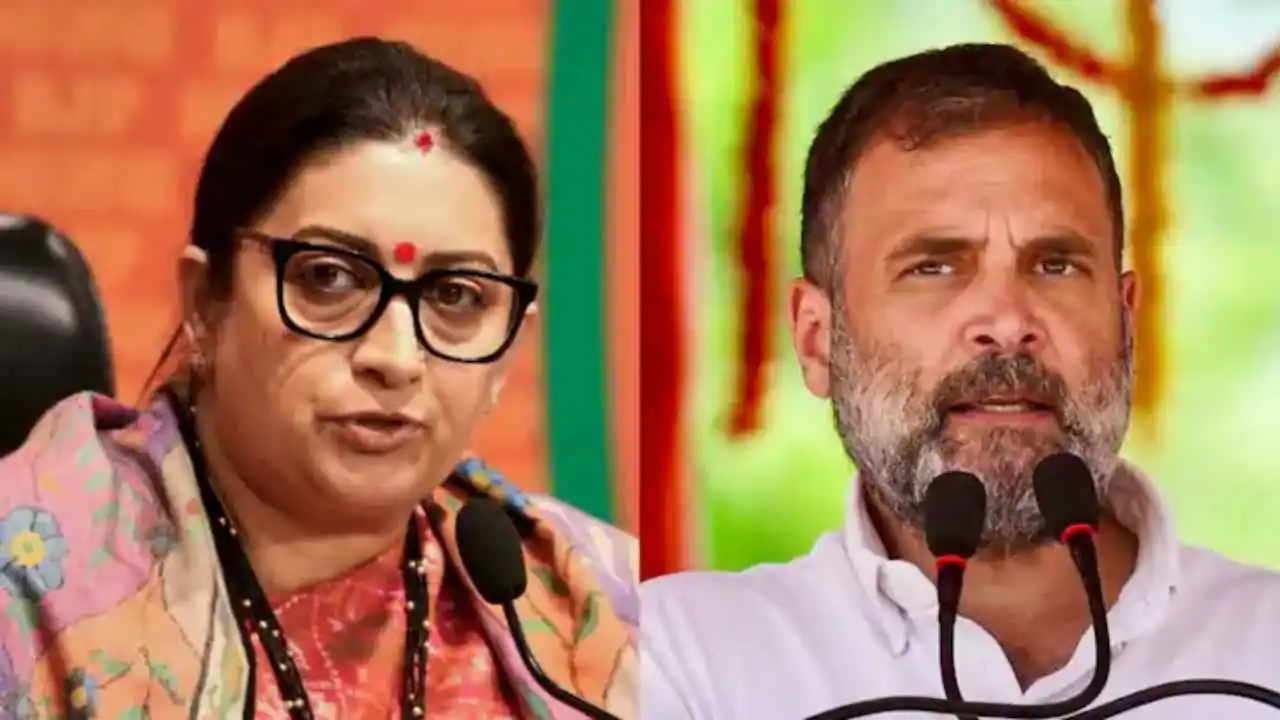
Union Minister Smriti Irani took a swipe at Rahul Gandhi on Saturday during a rally in Uttar Pradesh’s Amethi. While addressing the public rally, Irani said Rahul Gandhi spoke about his relations in Amethi and then he went to Wayanad where he declared the Kerala seat as his home as he filed for his nomination for the Lok Sabha elections.
Smriti Irani, who will be contesting her Amethi seat yet again, criticised the Rahul Gandhi for changing his families and said they have seen people changing colours, but for the first time changing families is being witnessed. The Union minister urged the people of Amethi to cast their votes on May 20, the day when Amethi goes for elections. She talked about the benefits of voting for BJP and said, the poor will get free ration for five years, farmers will get Rs 6,000 every month, and will get Rs 5 lakh every year under the Ayushman Bharat scheme.
Irani further added that Congress on the other hand has declared that it will calculate the wealth of the people if voted to power. She took a swipe over Congress candidates and said the grand old party is yet to announce its candidates for two key constituencies in Uttar Pradesh – Amethi and Raebareli, which have historically been the Congress’s stronghold. The BJP leader said that now that the polling in Wayanad has concluded, the Congress candidate will arrive in Amethi, but will first visit the Ram Temple.
She slammed Congress for rejecting the invitation to the Ram Temple Pran Pratishtha and said they rejected the invitation to the Ram temple Pran Pratishtha, now they will go to the Ram temple as they believe that this will get them votes in the ongoing Lok Sabha elections which means now they will go to the extent of betraying god as well.
2024 Lok Sabha Elections
Lok Sabha election 2024: Nearly 50% voter turnout recorded in second phase till 3 pm
The constituencies going to polls today include all 20 Lok Sabha seats in Kerala, 14 in Karnataka, 13 in Rajasthan, and others spread across different states.
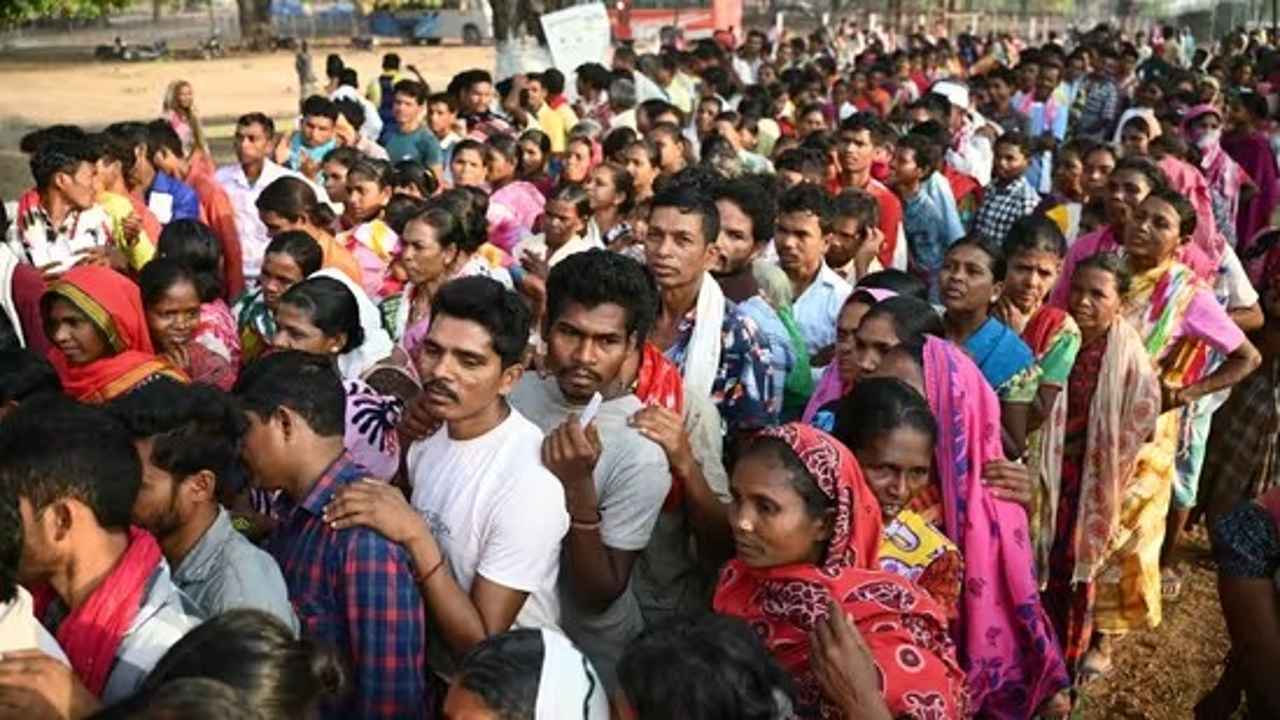
In the second phase of Lok Sabha elections 2024, over 50% of voters were registered in 13 states and the UTs till 3 p.m. 65% of voters participated in the first round of the Lok Sabha elections.
The 18th Lok Sabha elections are currently in their second phase, with voting for 88 seats taking place across 13 states and union territories. There are more than 1,200 people running for office, four of them are from outside Manipur.
Union minister Rajeev Chandrasekhar, BJP members Tejasvi Surya, Hema Malini, and Arun Govil, Rahul Gandhi and Congress leader Shashi Tharoor, DK Suresh, the brother of Karnataka Deputy Chief Minister DK Shivakumar, and former chief minister HD Kumaraswamy are among the notable contenders for the second phase.
In 2019, the NDA had won 56 of the 89 seats and the UPA 24. Six of these seats have been redrawn as part of the delimitation exercise.
The first phase of the seven stages of the elections took place on Friday, including 102 seats spread across 21 states and Union territories. Voter turnout was about 65.5% in the first phase, according to the reports.
In biggest festival of democracy, people from all walks of sector took part in it. A video went viral where former India captain and current Indian team head coach Rahul Dravid and former India player and head coach Anil Kumble were seen standing in line to cast their vote.
Meanwhile, voting started at 7 a.m. and will end at 6 p.m. The Election Commission has extended voting hours for those who are in line by an hour. According to Election Commission figures, the first two hours saw a 9.3% voter turnout throughout the 88 constituencies. By 9 am, Kerala had recorded 8.52%, Karnataka 9.21%, and Madhya Pradesh 13.82%.
In this phase, there were about 15.88 crore eligible voters, comprising 5.929 third-gender electors, 8.08 crore males, and 7.8 crore women. 3.28 crore young voters, aged 20 to 29, are among them; 34.8 lakh of them are first-time voters.
2024 Lok Sabha Elections
Lok Sabha elections 2024: 102-year-old man walks to polling booth to cast his vote in Jammu
The lowest voter turnout so far was noted in Ramgarh at 1.53%.
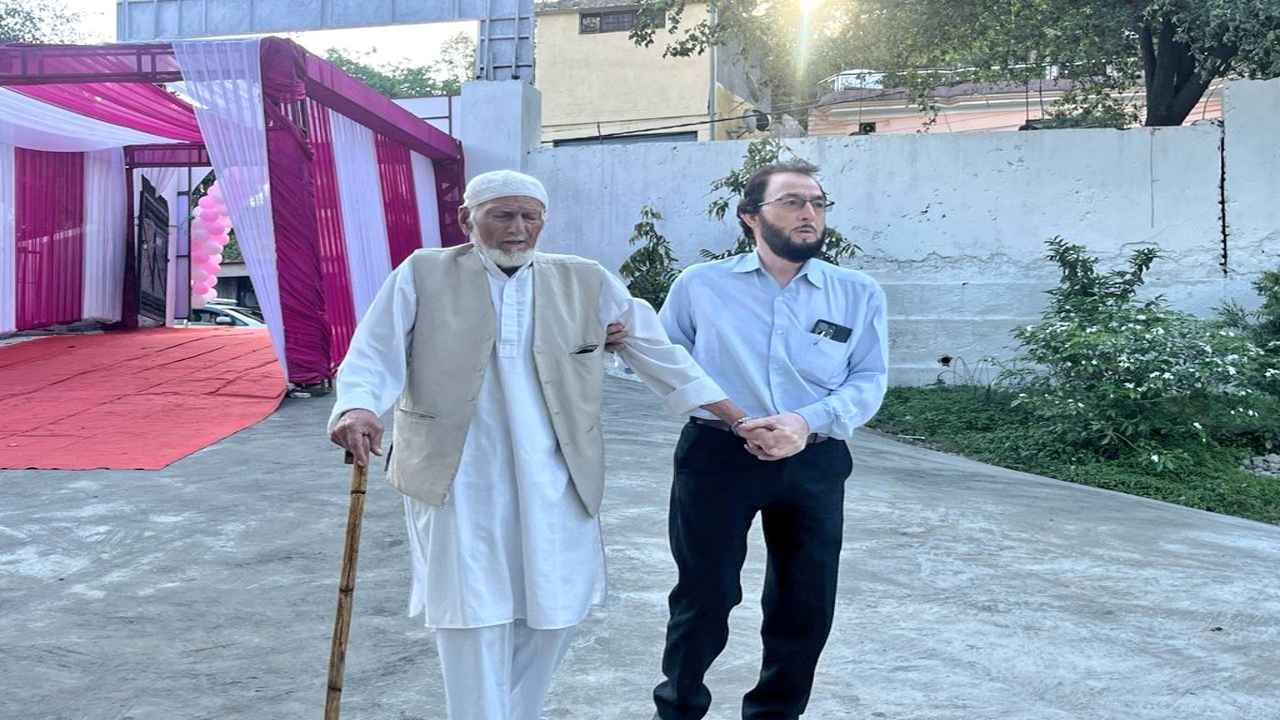
A 102-year-old man showed up at a Jammu polling place to cast his vote in the second phase of the Lok Sabha elections on Friday. Haji Karam Din arrived at the Reasi district polling place in the Jammu constituency with a walking stick in hand and a family member who assisted him with the pre-voting process.
Haji Karam Din, who is 102-year-old, showed his inked finger and posed for pictures outside the polling booth after casting his vote. He said voting at this polling place at this age makes him very happy. He has always cast his vote. Even at the age of 102, this experience is still ongoing, he said.
Reasi district is a part of the Jammu parliamentary constituency, and 22 candidates are up for vote with around 17.81 lakh eligible voters.
BJP’s sitting member Jugal Kishore Sharma is aiming for a third term in office following wins in the elections of 2014 and 2019. Former minister and Congress candidate Raman Bhalla is his main opponent.
Voting in the Jammu-Reasi Lok Sabha constituency began with eager voters showing up at the polling places. Some of them were wearing traditional Dogra attire.
In 2,416 polling places around the constituency, voting got underway at 7 a.m., and 10.39% of the total votes were cast by 9 a.m. In the 2019 Lok Sabha elections, Jammu recorded a 74% voter turnout.
Following the repeal of Article 370 and the division of the former state into two Union Territories five years ago, this is Jammu’s first significant election.
The Akhnoor segment received the highest percentage of votes, 14.24%, followed by Reasi (14.13%), Gulabgarh (13.53%), Shri Mata Vaishnodevi (12.71%), Marh (12.31%), Samba (8.56%), R S Pura Jammu South (8.17%), and Suchetgarh (5.67%), according to the officials. Ramgarh recorded the lowest voter participation of 1.53% so far.
Low attendance was observed in the border areas of the districts of Jammu and Samba till nine in the morning, according to poll data.
The officials said that big lines of voters were observed at several polling places throughout Jammu city. Voters were observed heading towards polling places early in the morning.
-
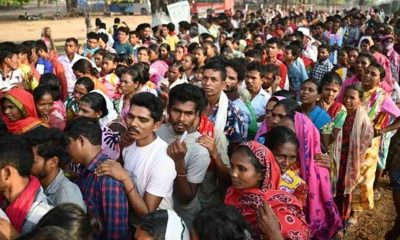
 2024 Lok Sabha Elections21 hours ago
2024 Lok Sabha Elections21 hours agoLok Sabha election 2024: Nearly 50% voter turnout recorded in second phase till 3 pm
-
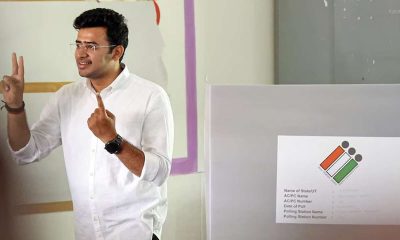
 2024 Lok Sabha Elections19 hours ago
2024 Lok Sabha Elections19 hours agoElection Commission books BJP MP Tejasvi Surya for seeking votes in the name of religion
-

 Cricket news2 hours ago
Cricket news2 hours agoIPL 2024: Punjab Kings beat Kolkata Knight Riders by 8 wickets to chase down highest T20 total
-

 2024 Lok Sabha Elections22 mins ago
2024 Lok Sabha Elections22 mins agoSmriti Irani takes a swipe at Rahul Gandhi for calling Amethi his home but contesting Lok Sabha elections from Wayanad

